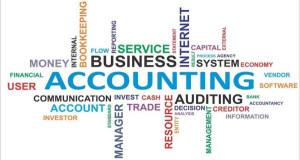Though bookkeeping procedures may differ by industry, every business owner and manager understands that there are factors that measure their success. Not only do your service/products need to be up to par or your firm has to be at a great location. You should also have a detailed accounting system set up in place. Bookkeeping is the backbone of running a business. Since there is little room for error, learning how to do bookkeeping for a restaurant (or any commerce) correctly is vital. Whether you decide to seek help from a professional accountant or manage the transactions yourself, understanding the process can make a noticeable difference in your profits.
Determining when to capitalize expenses or make purchases can be challenging, especially when doing bookkeeping for a small restaurant. The fate of your restaurant rests on a solid business plan, detail orientation, organization skills, and the discipline to accurately keep record of your finances. Restaurant owners/managers may be overwhelmed from having to manage their staff while tracking books at the same time. Even if you don’t hold an accounting degree, the concept of restaurant bookkeeping is very simple so long as you are organized.
To have a better understanding of various bookkeeping components and the type of accounting software that works best for your business, the following restaurant accounting tips can help you make an informed decision to better manage your financial data. But even before you select bookkeeping software, you cannot operate a successful business if you don’t know:
- How much you are spending
- Where and what you are spending your money on
- How much revenue you are generating monthly and/or annually
- What are your inventory costs and profit margins
- How much you need to make cover payroll, overhead and still earn a steady profit
Fortunately, most bookkeeping programs do a lot of weight lifting for you. There are plenty of options in the market but when purchasing software, you need to make sure it will synchronize with other systems, but especially with your POS and restaurant inventory management system. With the right integration, for instance, you’ll be able to automate your restaurant accounts payable and receivable by recording all the purchases and sales you make.
Tracking and recording your expenses require precision. Estimating costs can accrue over a course of a week or a month and begin to noticeably affect your bottom line. Lumping your expenses into two categories can help you understand and track your expenses better. There are prime costs and fixed costs. Prime costs refer to the majority of your expenses such as food, beverages, employees, and benefits. Costs on those items are subject change and you should keep a close eye on them to track any reoccurring issues and search for areas to cut expenses and raise profits. Fixed costs typically make up the minority of your expenses which include rent, mortgage, restaurant furniture, appliances, equipment, insurances, and other operational expenses. Such costs are immutable. Recording how much you spend on prime and fixed costs can tell you how much money you need to earn on a weekly basis to break even or increase your profit margin.
Creating a profit and loss statement is another effective tool to track your revenue, fixed costs, and prime costs. It summarizes your entire restaurant accounting information in one document. You may customize this statement to suite your specific business needs. If you choose this method to organize your transactions, providing a detailed breakdown of all your costs and profits is advisable for ease of understanding. Though creating a weekly P&L statement is recommended, you can generate a monthly or annual report to your liking and include as much or little details as you feel necessary.
Many restaurants are increasing using POS systems which compute orders and complete payment transactions. Some POS systems will allow you to track inventory, labor costs, and methods of payment and even run sales reports. However, the profitability of your restaurant extends beyond a solid concept and a talented chef. Staying on top of your expenses, spending costs, and revenue can turn your profit. These restaurant bookkeeping tips should help you organize your accounting records and manage your finances with minimum stress. In conclusion, accuracy and organization are two most integral components of effective restaurant bookkeeping.

